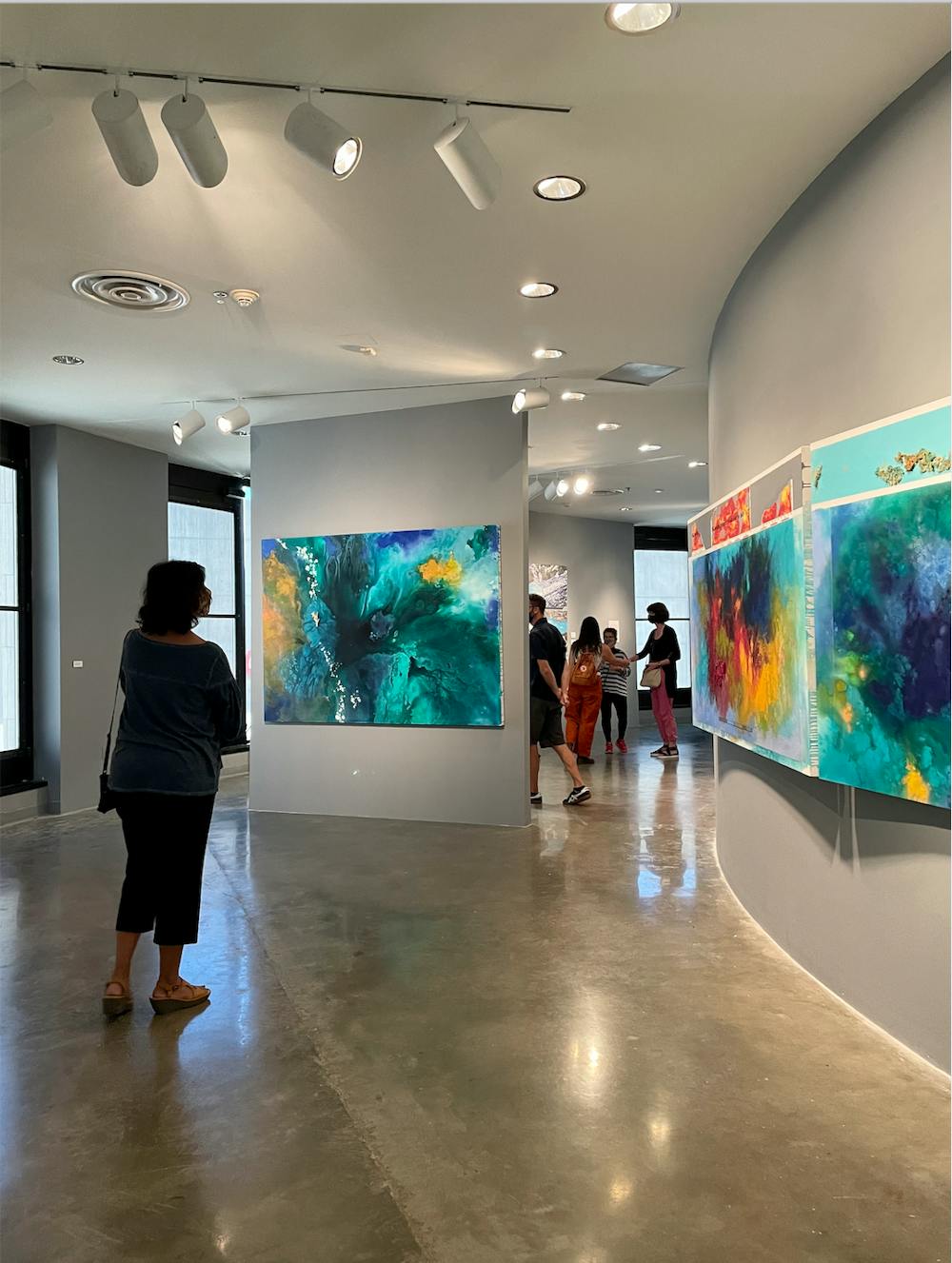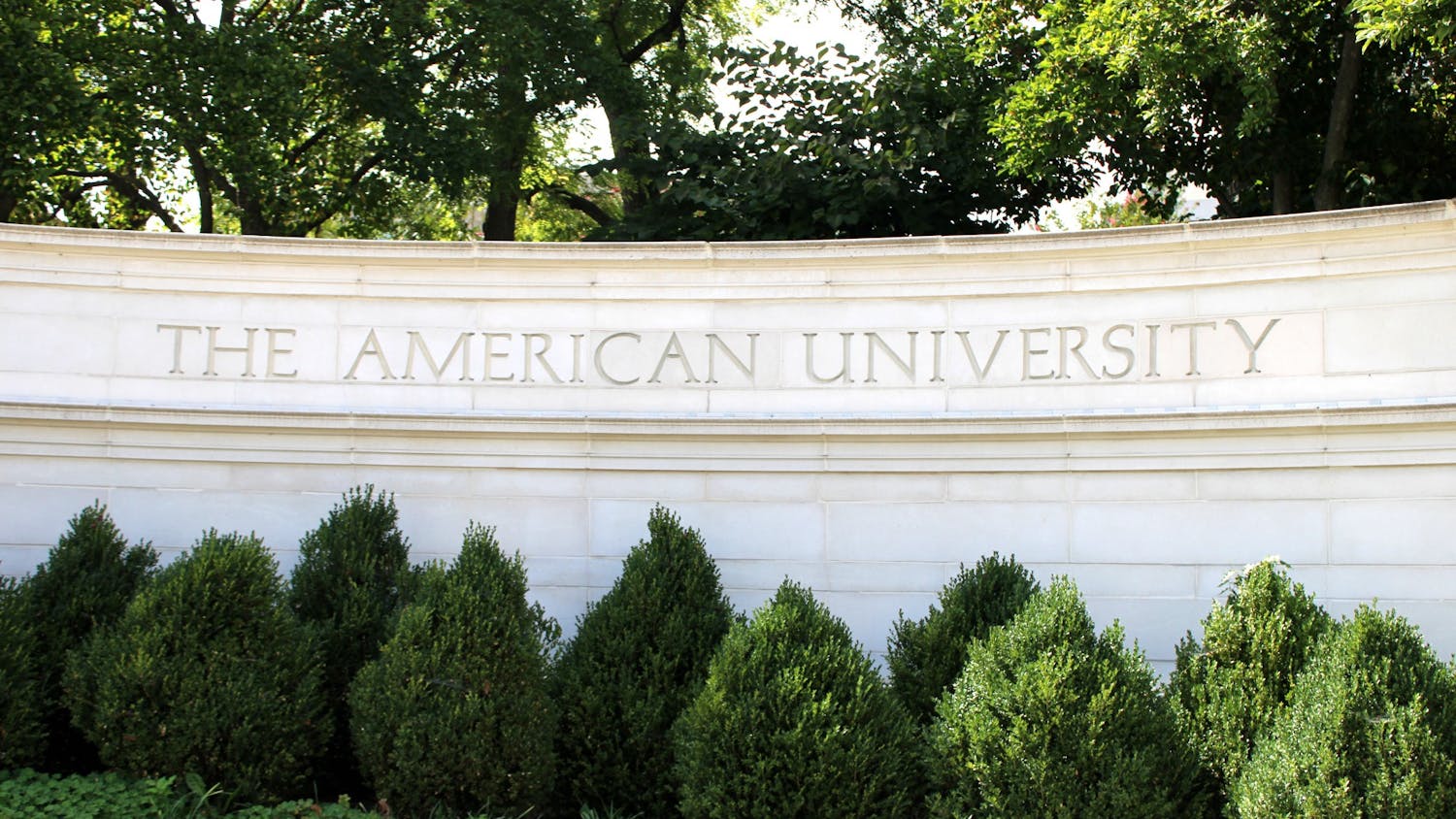Climate change is often presented in the media using the future tense, discussing temperature changes, deadlines, and initiatives set to occur by 2035 or 2050.
Diane Burko’s new art exhibit “Seeing Climate Change,” currently at the American University’s Katzen Arts Center, however, demystifies the climate crisis, forcing visitors to recognize this issue as a current and dire reality.
Burko’s “Seeing Climate Change” echoes her previous collections, including “Politics of Snow” and “Glacial Shifts, Changing Perspectives.” This time, there is added context of the coronavirus and increased urgency as the effects of climate change become more visible and frequent.
Burko has always captured the intrinsic value of nature through her art, and has been an advocate for using art to address climate change. It wasn’t until 2006, however, that she began to incorporate climate change into her work.
Burko started as a landscape painter in the 1990s. An avid traveller, Burko would often take aerial shots from planes, flying over grand landscapes. Burko said she wanted to depict “an implied history of the Earth,” showing not just the mountains and glaciers, but paying homage to the greater forces and equilibriums that create these phenomena.
In an interview, Burko explained that as her work accumulated, she began to notice shifts in the landscapes. As Burko saw the snow slowly disappear from mountains and glaciers start to recede, she asked herself: “What’s the point of painting a landscape if it’s going to disappear?”
As Burko’s focus shifted, so did her artistic style, with her work becoming increasingly abstract. In “Seeing Climate Change,” there are nods to 18th and 19th-century Romantic painters, displaying the grandeur and power of massive landscapes and natural phenomena.
“I’m an artist who hones in on the sublime,'' Burko said.
Burko’s pieces seek to raise awareness and concern on the topic of climate change by articulating how it affects the aesthetic experience, documenting the beauty remaining in nature. The grand landscapes created are mirrored by the size of Burko’s work, which required the AU Museum to extend walls and build entirely new ones to host Burko’s majestically catastrophe landscapes.
The size forces viewers to engage with the pieces, looking from far away and then stepping closer to observe the layered media and color.
“I struggle to use the language of paint to develop new vocabulary to make visual poetry imbuing it all with something that draws you in — compels you to look more closely and then reveals some ugly truths,” Burko said.
Burko describes her artistic process as a “dance between having intention and being open to possibility.” This unstructured process has led to the creation of compelling multimedia pieces, including “Unprecedented,” one of her more recent works that reflects on the climate crisis in conjunction with the coronavirus. Within the gestural abstract brushstrokes, viewers find scientific graphs geometric shapes, showing the power of art and science working in collaboration.
“Artists respond to their time,” Burko said about how the pandemic influenced the trajectory of her work.
Burko said she uses her art to show how the pandemic is a metaphor and warning for what’s ahead. Instead of giving into a full dystopian narrative, Burko instead juxtaposes the catastrophic landscape of warm and cool colors clashing together with a piece of burnt wood attached at the bottom of the piece, leaving a reminder that forest fires caused by global warming bring both destruction and new growth.
From the pandemic to the existential threat of climate change, Burko’s exhibit helps audiences cope with the current state of the world, giving viewers the awareness that the situation demands. These time capsules of grand landscapes show the audience what is at stake, encouraging viewers to lean into the melancholic beauty and respond with conversations that hopefully catalyze change.
The American University Museum is open from 11 a.m.- 4 p.m. Friday through Sunday, and Burko’s exhibit will be available until Dec. 12. Burko will be giving a virtual gallery talk on Oct. 12 from 6 p.m.- 7 p.m. ET. Click here to register.





